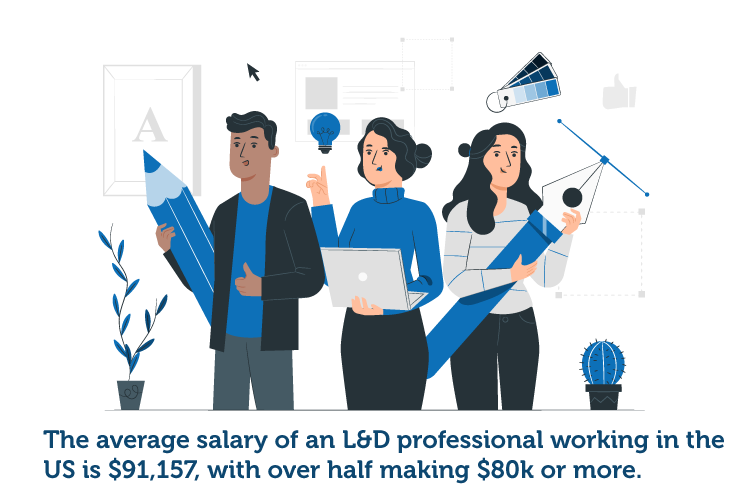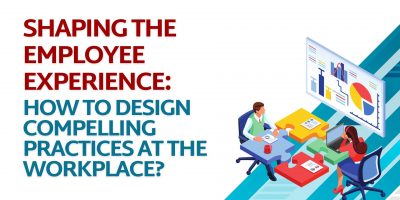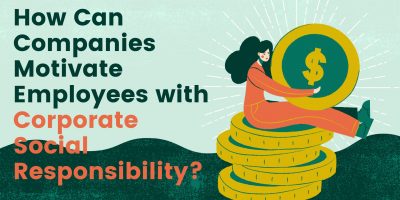
When High Turnover Signals Leadership Challenges
Great leaders don’t just ask, “Why are people leaving? But rather, “What must we change to make them stay?”

Salary plays a big part in employee satisfaction.
But how can an employee know if they’re being paid fairly if they have no idea what the benchmark is?
Especially if they’re just starting out, it can be very tricky to know what they should aim for, where their career could go, and how to get there.
That’s why 360Learning conducted a survey involving 255 learning and development professionals asking them about their salaries, future career plans, and challenges they came across in the industry.
The goal was to collect information to help L&D professionals understand what factors correlate with higher pay, and provide them with a benchmark to help them navigate their subsequent career choices.
Ironically, this type of content is essential since one of the main challenges they identified was a lack of career guidance for learning and development professionals.
In this article, we will explore the findings of the survey, including:
In recent years, the term “corporate sustainability” has taken center stage in discussions within the business community, academic circles, and the mainstream media. Frequently, it’s used synonymously alongside other terms like “sustainable development” and “corporate social responsibility.”
But what is corporate sustainability, and how does it connect with these other concepts?
At its core, corporate sustainability is a business approach that seeks to create long-term value for shareholders, employees, customers, and the broader community by responsibly and transparently managing environmental, social, and economic impacts.
While it shares common ground with sustainable development and corporate social responsibility (CSR), there are notable distinctions.
Sustainable development is a broader concept that revolves around meeting present needs without jeopardizing the ability of future generations to meet their own requirements.
CSR primarily centers on a business’s social and environmental impacts, whereas corporate sustainability adopts a more comprehensive approach, encompassing all three pillars of sustainability: environmental, social, and economic.

Getting compensated fairly at one’s place of work is essential for a healthy workplace and, ultimately, for employee retention.
These figures are also important so that companies can identify and address issues of bias or favoritism.
Unsurprisingly, the survey of 255 L&D professionals showed that money does matter: inadequate compensation is indeed one of the reasons employees quit their jobs.
But what’s a “low” salary?
According to the survey, the average salary of an L&D professional working in the US is $91,157, with over half making $80k or more.
Here’s a more complete breakdown of the average annual salary in 2021:

Here is the composition of the 255 participants according to their respective job titles:

Participants with the title L&D managers or equivalent did quite well and recorded an average annual salary of $104,242. Those with the title Instructional Designer or equivalent were on the lower end, making an average of $78,182 per annum. Head/Chief Learning Officers or similar made an annual average salary of $115,000 and were among the top earners, while the Learning Specialist and their equivalents make $73,049.
The survey also showed differences in compensation according to the sector:
The average annual salary of L&D professionals in the public sector is $82,209, with almost half of them (42%) making $69k and below.
Their counterparts from the private sector make an annual average of $95,941, with nearly half (47%) making $90k and above.
Company size also matters when it comes to an L&D professional’s paycheck.
L&D professionals working at Small and Medium Enterprises (SMEs) or companies with 0 to 49 employees make an average of $75,606 annually. Their counterparts working with bigger companies, with over 1,000 employees, recorded an average annual salary of $97,066.
Finally, experience significantly determines how much an L&D employee makes.
The rough estimate of the annual salary of an L&D professional with less than five years of experience is $73,690. The professionals with five to fifteen years of salary recorded a rough estimate of $91,804 annual income.
The L&D top earner category had some characteristics in common, including:
The survey seemed to confirm the benefits of mentoring since those with a mentor had a higher average raise than those without (4.3% raise vs. 2.7%). Those who earn more (over $100K) were also more likely to have a mentor and were less likely to view the lack of guidance as their primary challenge in career advancement.
Inquiring about mentorship programs might be a savvy step for those looking to boost their career.
If one doesn’t yet exist, this could be the perfect time to chat to the L&D team about starting one or might even be the occasion to try and create an informal mentorship relationship with a more experienced colleague.
As noted above, those working in the private sector went home with bigger paychecks than those in the public sector.
Of course, there are more factors to consider besides money when deciding what kind of organization to work for, and the private sector may not be a good fit for everyone.
But this is perhaps a distinction for new Learning and Development professionals to keep in mind as they choose their first few professional experiences.
It might surprise readers to learn that experience working in L&D went farther when it comes to earning power than degrees.
In fact, respondents that had a Master’s Degree or Ph.D. (including a JD or EdD) were more likely to say they never had a raise than those with a high school diploma, Associate’s degree, or Bachelor’s Degree.
Overall, there was no difference in salary between those who hold a degree related to L&D, such as in Instructional Design, Psychology, or Education, and those who don’t.

Above, we’ve outlined some guidance for L&D professionals looking to shape their careers. But there’s one underlying approach crucial for any learning and development leader looking to further their professional development: focus on outcomes, not outputs.
Too often, L&D teams get wrapped up in metrics like course completions and engagement scores—in other words, bums on seats. But top management is much more interested in understanding how L&D moves the needle on business-critical KPIs like employee retention, customer churn, and revenue.
If L&D leaders can tie training programs to measurable results in these areas, they have a strong case for career advancement (and a salary hike).
Understanding from top brass on where the business is getting stuck—where its critical points of failure are—is the first step in building a training program to address them.
Browse our curated list of vendors to find the best solution for your needs.
Subscribe to our newsletter for the latest trends, expert tips, and workplace insights!

Great leaders don’t just ask, “Why are people leaving? But rather, “What must we change to make them stay?”

Transform your workplace by addressing employees’ needs to create an excellent and rewarding employee experience.

Unlock the potential of corporate social responsibility (CSR) to inspire and motivate your employees. Discover strategies that align purpose with profit, creating a workplace driven by shared values and meaningful impact.

Join the mentorship vs. sponsorship discussion – unveil their benefits and importance in the workplace and discover how they influence employees and organizations.
Used by most of the top employee benefits consultants in the US, Shortlister is where you can find, research and select HR and benefits vendors for your clients.
Shortlister helps you reach your ideal prospects. Claim your free account to control your message and receive employer, consultant and health plan leads.